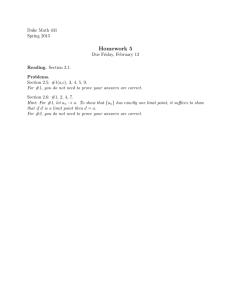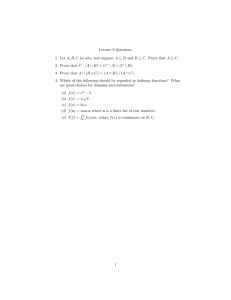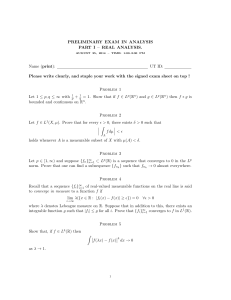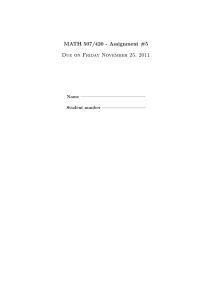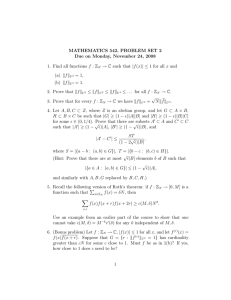Document 15510740
advertisement
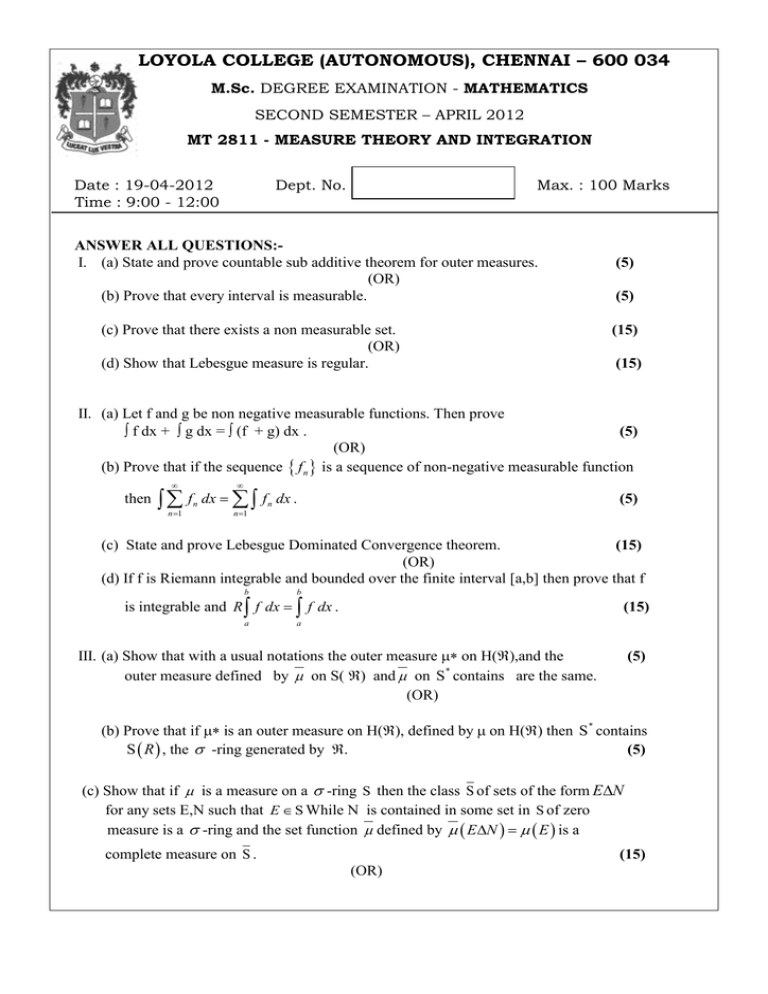
LOYOLA COLLEGE (AUTONOMOUS), CHENNAI – 600 034 M.Sc. DEGREE EXAMINATION - MATHEMATICS SECOND SEMESTER – APRIL 2012 MT 2811 - MEASURE THEORY AND INTEGRATION Date : 19-04-2012 Time : 9:00 - 12:00 Dept. No. Max. : 100 Marks ANSWER ALL QUESTIONS:I. (a) State and prove countable sub additive theorem for outer measures. (OR) (b) Prove that every interval is measurable. (c) Prove that there exists a non measurable set. (OR) (d) Show that Lebesgue measure is regular. (5) (5) (15) (15) II. (a) Let f and g be non negative measurable functions. Then prove f dx + g dx = (f + g) dx . (5) (OR) (b) Prove that if the sequence f n is a sequence of non-negative measurable function then n 1 f n dx f n dx . (5) n 1 (c) State and prove Lebesgue Dominated Convergence theorem. (15) (OR) (d) If f is Riemann integrable and bounded over the finite interval [a,b] then prove that f b b a a is integrable and R f dx f dx . (15) III. (a) Show that with a usual notations the outer measure on H(),and the outer measure defined by on S( and on S * contains are the same. (OR) (5) (b) Prove that if is an outer measure on H(), defined by on H() then S * contains (5) S R , the -ring generated by . (c) Show that if is a measure on a -ring S then the class S of sets of the form EN for any sets E,N such that E S While N is contained in some set in S of zero measure is a -ring and the set function defined by EN E is a complete measure on S . (15) (OR) (d) Prove that if * is an outer measure on H(),. Let S * denote the class of * Measurable sets then Prove that s * is a - ring and * restricted to is a complete measure. (15) IV. (a) State and prove Holder’s inequality. (5) (OR) (b) Define the following terms: convergence in measure, almost uniform convergence and uniform convergence almost everywhere. (5) (c) Let [X, S, ] be a measure space with ( X ) 1 . If is convex on (a, b) where a b and f is a measurable function such that fd ( f )d . When does equality occur? , for all x, prove that (15) (OR) (d) State and prove completeness theorem for convergence in measure. Show that if uniform then in measure and almost everywhere. (15) almost V. (a) Define a positive set and show that a countable union of positive sets with respect to a signed measure v is a positive set. (5) (OR) (b) Let v be a signed measure and let , be measure on [X, S] such that , , v are - finite, v « , « then prove that dv dv d [ ] . d d d (5) (c) Let v be a signed measure on [X, S]. (i) Let S and . Can you construct a positive set A with respect to v, such that and ? Justify your answer. (ii) Construct a positive set A and a negative set B such that A B X , A B . (15) (OR) (d) State and prove Lebesgue decomposition theorem. ************ (15)
